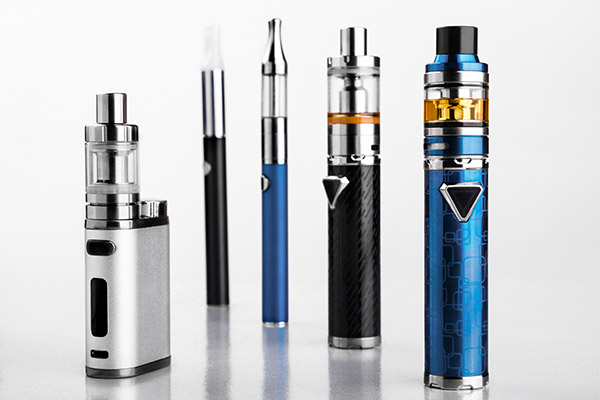Tobacco, Smoking & Nicotine
Vaping: Know the Dangers
Personal Solutions Inc. — Bedford, PA
Why is it important to focus on tobacco prevention and cessation?
- After alcohol, tobacco products (cigarettes, smokeless tobacco, Juuls and e-cigarettes) are the most commonly used drugs among adolescents. Tobacco is a drug, even though most people do not consider it to be one due to the wide acceptance of its use.
- Tobacco usage is the leading preventable cause of death, killing more than 400,000 people each year.
- Tobacco kills more people than AIDS, alcohol, car accidents, murders, suicides, and fires combined!
Can tobacco be a gateway drug?
- Yes. The National Institute on Drug Abuse found that 12-17 year olds who smoke cigarettes are 100 times more likely to smoke marijuana, 14 times more likely to abuse alcohol, and 32 times more likely to use cocaine than their nonsmoking peers.

Why do Big Tobacco Companies focus on youth?
- More than 50% of all smokers begin smoking before the age of 14, and 90% begin by the age of 19. Thus, the earlier you start smoking and become addicted to tobacco, the more money they make.
- If adolescents can be kept tobacco-free, most will remain tobacco-free for the rest of their lives. Tobacco companies figure they need to get you early if they are going to get to you at all.
What toll does tobacco take locally?
- Smoking is the #1 preventable cause of death in Pennsylvania. It is also the #1 preventable cause of death in Bedford County.

What is in tobacco products that makes them so harmful?
- Tobacco (which contains nicotine): can make your teeth and nails yellow and can cause bad breath. It can also cause gum disease and mouth cancer.
- Nicotine: Nicotine is an addictive drug. This means that once you’ve started smoking or using tobacco products, you’ll have a very hard time quitting.
- Tar: Tar builds up in your lungs and destroys cilia – the tiny hairs that keep your lungs clean so they function properly.
In addition to tobacco, nicotine, and tar, cigarettes contain:
- arsenic (used in rat poison)
- benzene (component of rubber cement)
- hydrogen cyanide (poison used in gas chambers)
- In fact, 599 ingredients have been identified in tobacco industry documents as being added to tobacco in the manufacturing of cigarettes. Click here for a complete list of cigarette ingredients.
What is Environmental Tobacco Smoke (ETS, Secondhand Smoke)?
- Sidestream smoke, which curls off the end of a smoldering cigarette, is the main component of secondhand smoke and is different in composition from the “mainstream” smoke that smokers inhale. Sidestream smoke contains higher concentrations of several known or probable human carcinogens (agents that cause cancer).
- Secondhand smoke is estimated to cause 30,000 to 50,000 deaths from heart disease of U.S. nonsmokers each year.
- Secondhand smoke is estimated to cause 3,000 deaths per year of U.S. nonsmokers from lung cancer.
Isn’t smoking low-tar cigarettes safer than regular cigarettes?
- No. A scientific study has found that “light” and “low-tar” cigarettes are no less harmful than other brands. Tobacco companies deliberately marketed low-tar cigarettes to prevent smokers from quitting.

Is using smokeless tobacco safer than smoking cigarettes?
- No. There are serious health risks for all tobacco users, including smokeless tobacco users. These may include damage done to the delicate lining of the mouth and throat, which could result in cancer. In addition, smokeless tobacco users also increase their risk of heart disease and stroke, since chewing tobacco and snuff makes the heart work harder by increasing heart rate and blood pressure.
In addition to dramatically increasing the risk of heart disease and stroke, using tobacco products greatly increases the chance of developing many different kinds of cancers. In addition to the types of cancers already known to be caused by smoking, such as lung, oral cavity, gullet, pharynx, larynx, pancreas, and bladder cancer, new cancers declared to be caused by smoking include cancers of the stomach, liver, cervix, uterus, kidney, and nasal sinus, as well as myeloid leukemia.
Youth Anti-Tobacco Movements
BUSTED!
BUSTED!: BUSTED! is a statewide youth anti-tobacco movement and a grassroots advocacy campaign encouraging Pennsylvania teens to join in the fight against tobacco use.
The objectives of BUSTED! include:
- Educating and training PA youth about advocacy and the tobacco industry (particularly how the industry attempts to lure teen smokers through deceptive marketing practices)
- Empowering them to use the movement as their vehicle for spreading anti-tobacco messages
- Preparing them to return to their communities and organize themselves to create a cultural change
TATU (Teens Against Tobacco Use)
TATU (Teens Against Tobacco Use): makes use of the influence that teens have on younger children. The program encourages older youth to advocate a non-smoking practice to younger kids. It employs a peer-teaching model as the delivery mechanism to teach young people about tobacco use and become advocates for tobacco-free communities. TATU is sponsored by the American Lung Association. It is currently implemented in 37 states and continues to grow.
